LUMIX DMC-G10 is world lightest digital interchangeable lens camera with a viewfinder. The G10 comes with features like iA (Intelligent Auto) mode, 720p video recording, optical image stabilizer, automatic intelligent scene selector mode and AF tracking. Like G2, Panasonic G10 also features 12.1-megapixel Live MOS sensor and the new Venus Engine HD II to help separate chromatic noise from luminance noise and apply the optimal noise reduction to each……….
Lumix DMC -G10 is it different from her big sister G2 only in a set with the G Vario lens 14-42/1 :3.5 -5 .6. Ergonomics and , DMC-G10 different from her big sister in a set with :3.5-5 Equipped to the latter also with this lens and make it next to the Lumix DMC -G10 reviewed here , so sisters show the differences between the two only on second glance. latter with this lens and make it next Lumix DMC-G10 reviewed here , so differences between two only on second The two cameras are so similar that we read our detailed test report of the Lumix G2 supplementary to this Kompakttest only highly recommend.
he two so similar that we read our test report of the Lumix supplementary to this related links). Not only visually in your hand conveys the same impression as the G10 Lumix its larger sister. only visually in your hand conveys impression as Thanks to the powerful grip on the right side of the case does they always secure , even -handed with the camera can take pictures without problems . Thanks to the powerful on the side of the case always secure, even-handed with the camera take pictures problems. Sure, the housing is also in the Lumix G10 plastic made unmistakable – but this plastic is without doubt one of the pleasant variety.
The mirrorless market keeps growing and growing. The G10 is one of Panasonic’s latest Micro Four Thirds format interchangeable-lens cameras. For those who still aren’t familiar, mirrorless models like this offer the versatility of a dSLR (and very similar image quality) in a more compact body. How do they achieve this feat? No prism. The downside is that mirrorless cameras have no optical viewfinders (though their electronic viewfinders are still better than live view mode). Anyhow, the G10 is the “lite” option of Panasonic’s M4/3 offerings for 2010. Not only is it supposedly the lightest Micro Four Thirds yet (Olympus’ E-PL1 is the smallest), but it’s lighter on features than its big brother, the G2. At $600, this competes directly with the Olympus E-PL1.
The Lumix G Micro System has revolutionized the photography industry ever since the release of the Panasonic G1, the world’s first interchangeable lens system camera based on the Micro Four Thirds System standard,” commented David Briganti, Senior Product Manager, Imaging, Panasonic Consumer Electronics Company. “We continue to expand this award-winning LUMIX G Series, and with its easy-to-use features and compact size, we expect the G10 to attract a lot of new users who want to step-up from their point-and-shoots.
The G10 employs a mirrorless structure as part the Micro Four Thirds System standard and eliminates a number of components that are found in a traditional interchangeable lens camera. Thanks to this innovative structure, the camera claims to be the world’s lightest system camera in a compact digital camera design. Furthermore, its lightweight body will come armed as part of its kit along with the newly announced Lumix G VARIO 14-42mm/F3.5-5.6 ASPH/MEGA O.I.S. lens.
The camera bundles in an array of features that render it easy to use. These include the iA (Intelligent Auto) mode that comes with a novel dedicated iA button. The mode when shooting still photos features MEGA O.I.S., Intelligent ISO Control, Intelligent Exposure, Intelligent Scene Selector and more. Recording 1280 x 720 HD video in Motion JPEG, QVGA, VGA and WVGA formats, users can simultaneously benefit from the high quality lens and the flexibility to change to other lenses. The camera also includes AF Tracking and Face Recognition function.
Most clearly reveal the austerity measures on the display but the Lumix G10: It sits rigidly and firmly on the back, the smart clamshell and swivel mechanism remains the larger Lumix DMC -G2 reserved . Even more painful , however, that the display of the Lumix DMC -G10 is sensitive to touch. With the innovative touch screen of the G2 can set the camera simply faster and more convenient. All the same, size and resolution of the monitor , Panasonic has not changed in the Lumix DMC – G10. The display continues to dissolve to 460,000 pixels and has a lush diagonal of three inches (7.6 cm). In the video viewfinder of the Lumix DMC -G10 Panasonic , however, has once again unpacked the thick red pencil : he shows the viewfinder only very pixelated coarse ( only 202 000 pixels compared to 1.44 million in the Lumix DMC -G2 ) – and what is even worse : he is significantly smaller (0.52 -times magnification of the viewfinder image on the exit pupil ) and the superior video viewfinder of the Lumix DMC -G2. If you have this camera almost feel through the viewfinder of a DSLR to look , so is the video viewfinder of the Lumix DMC -G10 more of a stopgap measure . In particular, glasses will get used to the viewfinder of the camera is difficult , too , he gives the impression of looking into a peep show .
The bottom line is can the Lumix DMC -G10 serving afloat, the most important settings are found without long study of the manual. Panasonic has the camera extensively equipped with dedicated buttons and switches and it also donated the clever click- wheel to the right thumb. It changes on light pressure, its function , including from the Aperture to adjust the exposure compensation and replaced as easily dial a second , as to bring higher quality DSLRs. The battery compartment is located ergonomically on the right side of camera , its lid can be opened even with an attached base plate . The tripod mount is exemplary in the optical axis arranged and made of metal. Less stable , however the covers work for the various connectors, at least they can be closed without fumbling .
Equipment over 30 scene modes are available , the optimal time to adjust to the current shooting situation camera can . over 30 scene modes available, the the current shooting situation can. So it is not just a face , but also a Gesichtswiederkennung or Smile . So it not just face, but also Smile. Whether this variety of programs, it makes an easy , perfect for a photo always , is undecided. this variety of programs, it easy, always, After all, experience the main programs easily get on the oversized dial . After all, experience main dial. If you choose the appropriate scene program would escape the torment , simply press the red ” by order “button. If you choose appropriate scene torment, red “by order” button. This is the intelligent automatic switched on, the scene mode automatically selects the best in each case . the intelligent switched on, the scene mode selects the in each case. This works surprisingly well in practice , the intelligent automatic do justice to its name . This works surprisingly well in practice, the intelligent do justice to its name. But even experienced photographers who prefer semi-automatic camera , or even completely manually adjust their will , the Lumix DMC -G10 not let down in the. But even photographers who camera, or even will, the Lumix DMC-G10 let down in the. It offers a classical time – or shutter priority , and even an automatic program is on board. It offers classical time-or shutter priority, and even automatic program is on board.
Lumix DMC -G10 and the image sensor from the higher- G2 inherited. Image quality as so much has DMC-G10 sensor from higher-G2 And so it is hardly surprising that the G10 in our renowned test laboratory DCTau in image quality the same strengths and weakness, as her larger sister . And so it is hardly surprising that in our renowned test in image quality same strengths and as her larger sister. If you would like information about the laboratory results may detail , detailed protocols for a small fee to download. No nakedness is the sensor of the camera to ISO 400: Shots with the Lumix DMC -G10 provide a proper reason sharpness as you for direct printing is particularly desirable before . Shots with the DMC-G10 a proper as you for direct before.
The input below dynamics up to this sensitivity never ordinary 8.5 f-stops and noise plays a negligible role. the sensor of the camera The input up this plays a negligible role. Dark it looks , if the higher sensitivity screws : ISO 800 attacks from the noise right into a massive event , but suppressed by preference the higher frequency noise. looks, if the screws: ISO 800 the noise event, by preference the frequency What remains are image disturbances, such as JPEG compression artifacts look like the picture detail and so many swallow unfortunately. What remains are such as JPEG look like picture detail and so After all, Panasonic’s engineers have the unpleasant color noise in the Lumix DMC -G10 good grip on getting in – it occurs only from ISO 3200 very gentle in appearance . After all, engineers have color noise Lumix DMC-G10 grip on – only from very gentle appearance. On the other hand, reduces the dynamic input from ISO 800 to ISO 3200, rapidly processed, the Lumix DMC -G10 only a meager seven stops. On the other hand, reduces the ISO 800 ISO 3200, processed, the DMC-G10 a meager The tone curve is a little cause for criticism : although it is fairly linear, but unfortunately not over the entire brightness range . tone curve is a little cause for criticism: although it is fairly over the entire brightness range. In the depths of the curve is very flat , it rises steeply according to the heights and in the middle . In the depths of the curve flat, it rises according to the heights and the middle. Applied to the photos , this means: The Lumix DMC -G10 offers high dynamic lights very quickly burn out much. Applied to the photos, this means: The Lumix DMC-G10 out much. You should therefore carefully as much as possible to illuminate the lights to “white spots ” to avoid contrasting motives . You should as much as possible the lights spots” motives. Sharpen it looks better from the: Although the camera is also just here to work not squeamish , but remains at Kantenüberschwingern so just stayed in the green . it looks just here to work not squeamish, but remains so just stayed in green.
Packing in a host of advanced digital camera functions, the camera is fabricated to be easy-to-use for users who may be new to system cameras. With an ability to record High Definition (HD) video along with high-quality still images, the portable system is accompanied by the Lumix DMC-G2 which was also launched in the Panasonic Lumix G series.
The Lumix G Micro System has revolutionized the photography industry ever since the release of the Panasonic G1, the world’s first interchangeable lens system camera based on the Micro Four Thirds System standard,” commented David Briganti, Senior Product Manager, Imaging, Panasonic Consumer Electronics Company. “We continue to expand this award-winning LUMIX G Series, and with its easy-to-use features and compact size, we expect the G10 to attract a lot of new users who want to step-up from their point-and-shoots.The G10 employs a mirrorless structure as part the Micro Four Thirds System standard and eliminates a number of components that are found in a traditional interchangeable lens camera. Thanks to this innovative structure, the camera claims to be the world’s lightest system camera in a compact digital camera design. Furthermore, its lightweight body will come armed as part of its kit along with the newly announced Lumix G VARIO 14-42mm/F3.5-5.6 ASPH/MEGA O.I.S. lens.
The camera bundles in an array of features that render it easy to use. These include the iA (Intelligent Auto) mode that comes with a novel dedicated iA button. The mode when shooting still photos features MEGA O.I.S., Intelligent ISO Control, Intelligent Exposure, Intelligent Scene Selector and more. Recording 1280 x 720 HD video in Motion JPEG, QVGA, VGA and WVGA formats, users can simultaneously benefit from the high quality lens and the flexibility to change to other lenses. The camera also includes AF Tracking and Face Recognition function.
Sporting a Live View Finder that has a resolution of 202,000-dot equivalent, the 60 fps Live View is powered by the Live MOS sensor. With both the Live View Finder and 3.0-inch large 460,000-dot high-resolution LCD, users are offered approximately 100% field of view. The camera is additionally equipped with a 12.1-megapixel Live MOS sensor and the new Venus Engine HD II. Keeping to the Panasonic Lumix G series digital camera family, this model too is also blessed by the efficient Dust Reduction System.
Some other attributes of the Lumix G10 include My Color mode with a total of seven preset effects, a total of 26 scene modes and exposure meter that can be displayed in the P/A/S/M shooting modes.The pricing and availability for the Panasonic Lumix G10 are yet to be revealed. The camera should hit stores in black color.
Specifications
- 12.1 megapixels
- Optical image stabilization
- 3-inch LCD monitor
- Micro Four Thirds
- 720p HD video (motion JPEG)
- Live MOS sensor
- JPEG + RAW format
- 7fps RAW continuous shooting
- Built-in flash
- Interchangeable lens
- HDMI output
- Captures to SD/SDHC/SDXC memory cards
- Rechargeable lithium-ion battery
The DMC -G10 has left the Lumix . camera – decent performance, one might summarize overall impression, DMC-G10 has left Lumix. Your equipment need not behind a middle-class DSLR to hide, the image quality holds up to ISO 400 with also , it is uniquely fast autofocus . need not to hide, the image quality up to ISO 400 with also, uniquely fast autofocus. Compromises one must accept the other hand, the ergonomics at: The picture-frame viewfinder solves too rough on a lot, unfortunately the display is fixed. one must the other hand, the ergonomics too rough a lot, the display is The video function is not quite up to the amount of time, which certainly easy to get over but the photographer.
Resources :digitalcamera-hq.com,digitalkamera.de,techshout.com

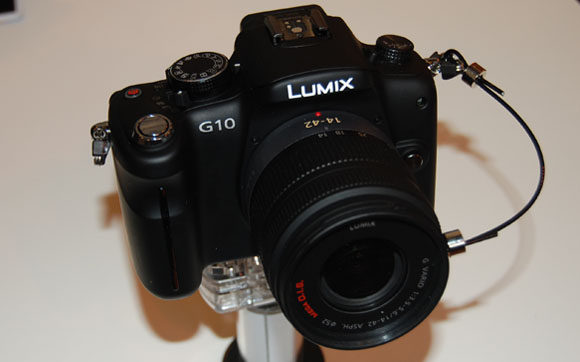
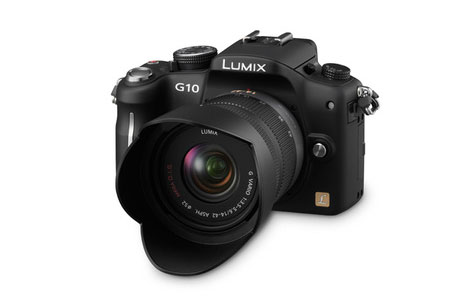
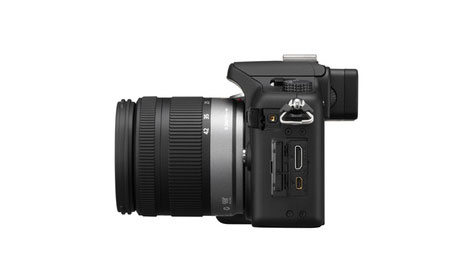
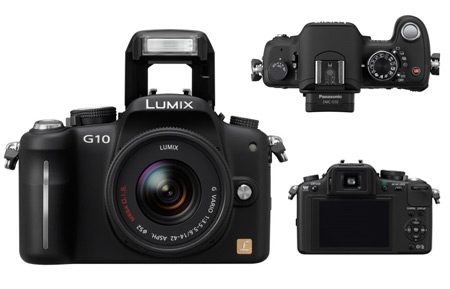
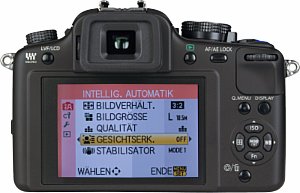
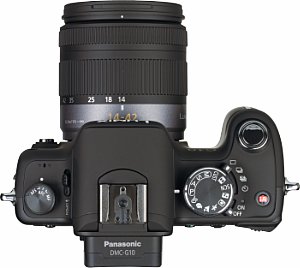
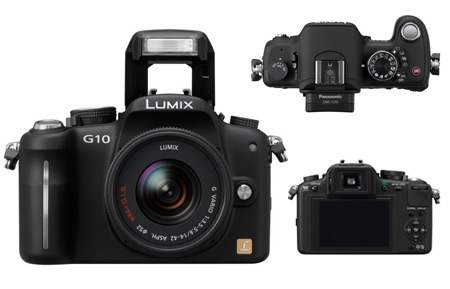
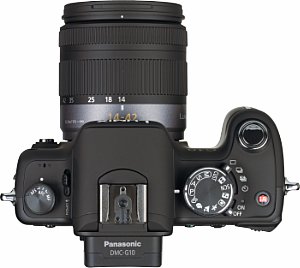
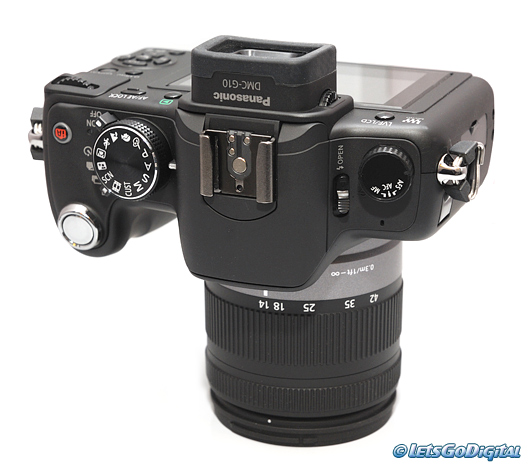


Pingback: Private Servers